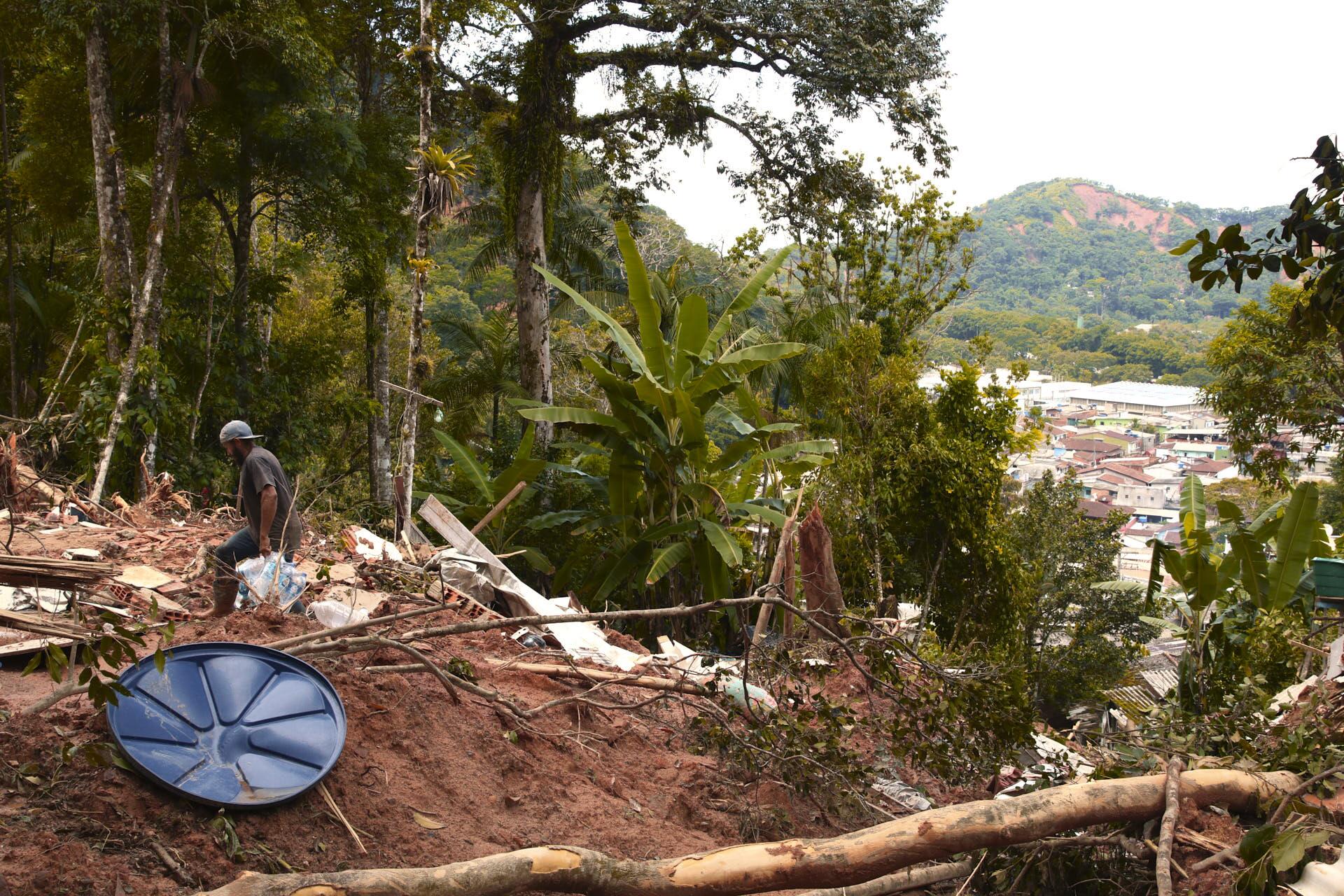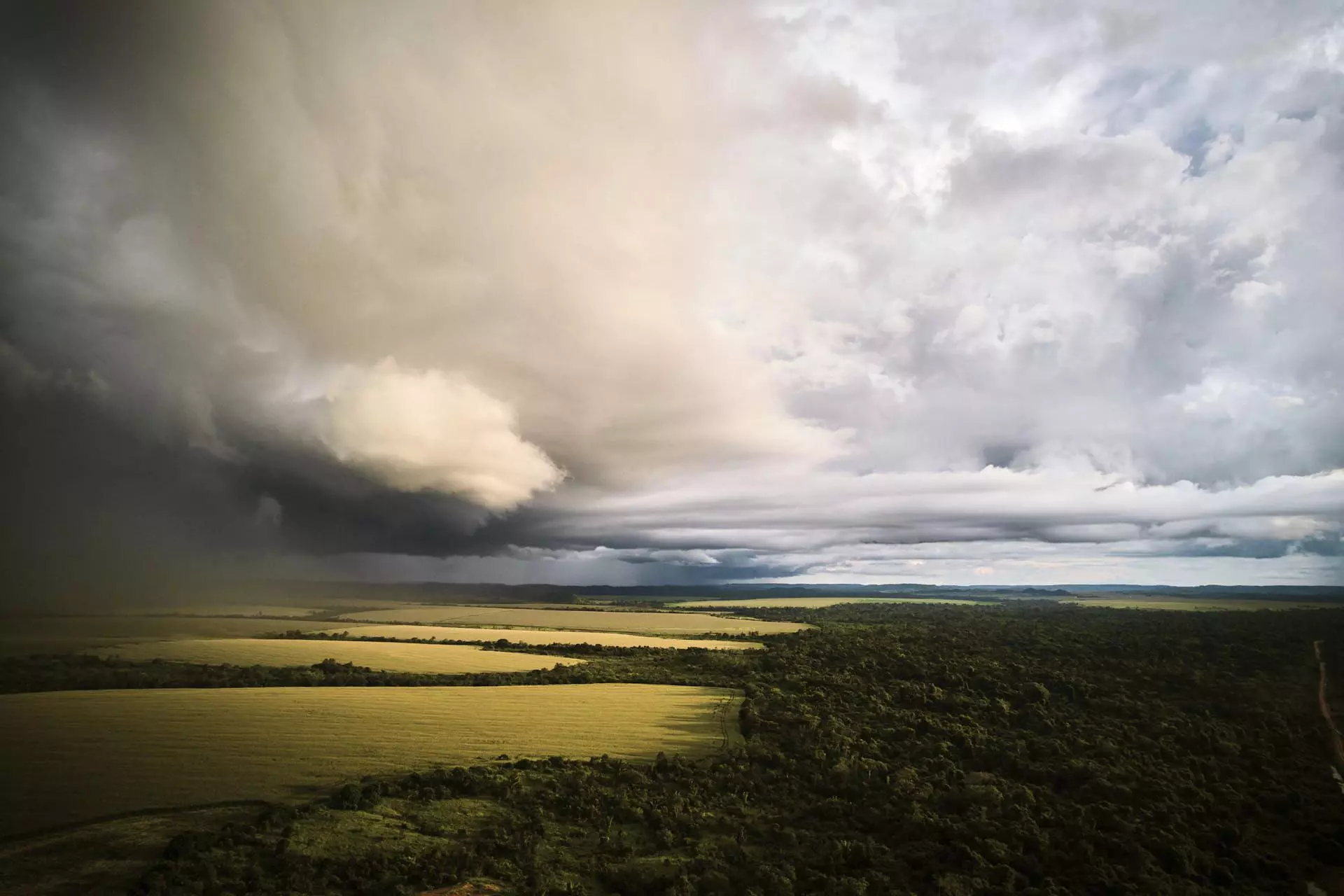The climate is an expression of life. We forget this at our peril. The horrifying floods and land-slides that recently wrecked havoc in southeastern Brazil need to be seen as more than just natural disasters. They must be recognised as man-made because the more we humans erode the Amazon and other living pillars of the natural world, the less stable is the sky above and the ground below.
Now that we have entered an era of climate disruption, calamities on this scale will become more commonplace and impact wider and wider swathes of society. Residents of poor peripheries already feel this because they have been pushed into the most vulnerable and degraded landscapes. Middle-class urbanites, by contrast, could until recently have gone about life in their air-conditioned bubbles pretending nothing changed, while the super-rich were well informed enough to foresee the problem but responded as selfish individuals by building apocalypse bunkers.
The latest carnage shows even money cannot guarantee a safe escape. A monstrous deluge — of double the average rainfall for the entire month of February in just nine hours — caused flooding and brought deforested hillsides down onto the main road between São Paulo and the coastal resorts of São Sebastião, Ilhabela, Ubatuba and and Bertioga. At least 65 people died, 4,000 people were forced to evacuate their homes and countless wealthy Paulistas who had sought a carnival-week sanctuary from the city’s noise and crowds were cut-off. Their get-away had suddenly turned into a confinement. Stranded holiday-makers began panic-buying. There was a supply problem and residents reported that prices of water and other essentials skyrocketed.
The solution is not just to bulldoze the collapsed mud and rebuild the road. Catastrophes like this will happen with increasing frequency unless Brazilian society recognises that it has to restore the country’s run-down natural infrastructure. At this stage in human history, that is the most pressing challenge facing all countries. If the 20th century was an era of concrete and steel, the 21st must be an epoch of tree-planting and protecting biomes that are essential to climate stability.

Houses destroyed in a landslide in Barra do Sahy, on the coast of São Paulo, after a storm on carnival weekend. Photo: Rovena Rosa/Agência Brasil
The Amazon, Atlantic Forest, Pantanal, Cerrado, Caatinga and Pampas do not just absorb carbon dioxide, they help to regulate rainfall, temperature and the chemical composition of the air we breathe. Trees, of course, play a role, but most of the work is done by the smallest lifeforms, bacteria bacteria — trillions and trillions of creatures that are constantly recycling, discharging gases and ensuring the atmosphere of the Earth is uniquely habitable. Every time, humans drain a swamp, cut down a forest or pave over a grassland, we are weakening that capacity.
Conversely, those who protect and nurture the rainforest and other centres of life are contributing to the stability of this global life-support system. This is a fundamental tenet of modern biogeochemistry and Earth System Science, though many forest communities have known this for much longer. Not for nothing does indigenous intellectual Davi Kopenawa Yanomami claim his people “hold up the sky.” Outsiders may consider indigenous people to be guardians of the trees, but they see themselves more as a part of the forest and part of the organic material in this living pillar.
In this way, we can see the struggle for the Amazon as being a fight between, on the one hand, those who run down the forest on behalf of short-term, individual market interests, and, on the other, those who want to strengthen the forest for the sake of a living, interdependent, sustainable bio-society. Everything that happens in the Amazon is thus a climate story, a political story and a survival story.
This helps to frame and explain what might otherwise be dismissed as mere oversights, accidents or incidents of negligence. Take SUMAÚMA‘s latest exclusive on the humanitarian emergency in Yanomami territory caused by an invasion of garimpeiros (illegal miners). Special reports editor Talita Bedinelli reveals the previous government, headed by Jair Bolsonaro, was warned by health officials as early as 2020 that Yanomami communities were suffering from disease, violence, alcoholism, prostitution and drug abuse as a result of the influx. Its deliberate neglect, which led to an investigation for genocide, contributed to the preventable deaths of at least 570 children, first reported by SUMAÚMA and now covered by media from across the world. Talita also writes a follow-up on the government’s first steps to expel the illegal miners and the continued problems facing the indigenous youth who come under their sway.
In a different part of the Amazon, the same malign negligence by the state could also be detected in the murders last year of Brazilian indigenista Bruno Pereira and British journalist Dom Phillips. In an interview published in this issue, Bruno’s widow, Beatriz Matos, tells SUMAÚMA creator and director Eliane Brum that her husband would not have been murdered if the Bolsonaro government had not depleted the state’s forest-monitoring facilities and effectively given a free pass to criminal gangs. “Bolsonaro’s administration didn’t do the basic things. It is the same thing that we are now seeing with the Yanomami, his negligence is becoming clear to the whole world”, says Beatriz.
The anthropologist is now director of the Department of Territorial Protection and Isolated and Recent Contact Indigenous Peoples of the Ministry of Indigenous Peoples. On the day of the interview, she was preparing to return, for the first time, to the Javari Valley, where Dom and Bruno were killed. One of the objectives of the trip headed up by Minister Sonia Guajajara, was to send a message: the state is taking back the region dominated by organized crime.
Dom and Bruno have joined a disturbingly long line of forest martyrs, who enter the folklore of land rights and environmental activists. The American missionary Dorothy Stang, who was murdered 18 years ago, is now depicted in the popular imagination as both a jaguar and a saint. Anthropologist Edimilson Rodrigues de Souza looks at her legacy and iconographic transmutation.
The Amazon seems to attract and nurture larger-than-life characters — and not all of them, by any means, are on the side of restoring the forest. Some local politicians are outspoken in championing destructive industries and denying the damage they cause to people, the land and rivers. The pro-mining mayor of Itaituba Valmir Climaco, for example, insists — contrary to all medical advice — that the toxic mining pollutant mercury is good for health. Journalist Catarina Barbosa asks him why he has issued so many mining licenses and ignored the impact on indigenous communities.
On a wider level, a major problem is weak regulation of the gold trade, which allows illegal miners to mix their contraband ore with legitimate gold. In an opinion article, King’s College law professor Octávio Ferraz and Federal University of Minas Gerais law professor Thomas Bustamante called on president Lula to close one of the biggest legal loopholes by revoking a clause that facilitates the purchase of gold extracted from indigenous lands.
The new government also needs to mitigate the catastrophic impacts of other policies put in place by previous administrations. The most concrete symbol of past mistakes is the Belo Monte Dam — the biggest hydroelectric plant in the Amazon — which was approved by the last Workers Party administration of Dilma Rousseff and is now devastating the once rich ecosystem of the Volta Grande (Great Bend) of the Xingu River. SUMAÚMA reporter Helena Palmquist reveals how a former fish nursery has turned into a cemetery as a result of the disruption to water levels. This is one of two articles Helena contributes to this issue, along with a touching story about the loss of a beloved 200-year-old sumaúma tree in Belém. The sadness of the city is further proof that people love, value and depend on nature far more than the markets and most media appreciate. Trees and other vibrant expressions of life sustain our spirits along with the climate.
Jonathan Watts
SUMAÚMA creator and director of international relations

DEFORESTED AREA IN THE AMAZON RAINFOREST NEAR THE XINGU INDIGENOUS PARK IN THE STATE OF MATO GROSSO. PHOTO: PABLO ALBARENGA/SUMAÚMA





